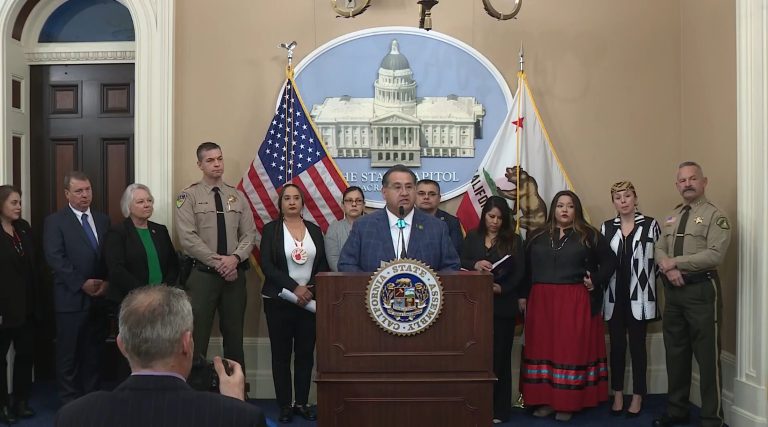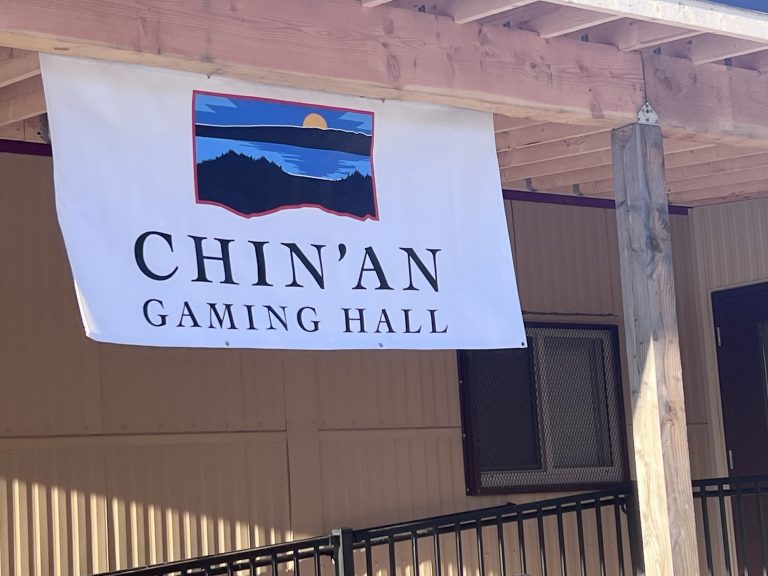Podcast: Play in new window | Download | Embed

Anchor: Art Hughes
Reactions from tribal officials to the U.S. Department of Interior’s report on boarding schools continue to come in. Leaders with the Navajo Nation and the Confederated Tribes of the Goshute Reservation say the report should be only the beginning of a larger process.
The Salt Lake Tribune reports Navajo Nation President Jonathan Nez called the report a starting point. He said he wants to see Interior follow up with plans to help Native families heal from intergenerational trauma due to the boarding schools and also create a more comprehensive report on each tribal nation’s experiences.
The report released last week identified 408 boarding schools that operated across 37 states from 1819 to 1969. There are at least 53 burial sites at those schools, which were designed to assimilate Native children into white culture through corporal punishment and other abuse.
Rupert Steele, a boarding school survivor and chairman for the Confederated Tribes of the Goshute Reservation in Utah echoed the calls from Nez and said the federal government must address the disastrous results of boarding schools and the impacts on families.
Steele said “I call upon the United States government to use the opportunity to rebuild American Indian communities, revitalize our languages and culture, and provide us with the resources necessary to thrive.”
 A new congressional analysis highlights the educational and economic barriers Native Americans continue to face. The Mountain West News Bureau’s Robyn Vincent reports.
A new congressional analysis highlights the educational and economic barriers Native Americans continue to face. The Mountain West News Bureau’s Robyn Vincent reports.
The report describes multiple entrenched systemic inequities. Native Americans lack equitable access to credit and financing. They confront roadblocks to education and jobs. And Indigenous people in the U.S. are facing persistent health disparities intensified by the COVID-19 pandemic.
Ryan Nunn (left) is with the Center for Indian Country Development. Some of his research is cited in the report. He says collecting more data is key to tackling these problems.
“So, for example, we really don’t know very much at all about tribally owned enterprises, which are incredibly important in Indian Country because they make up a big share of economic activity in tribal communities and they remit large revenues to tribal governments.”
Nunn points to some progress when it comes to federal data collection. For example, the Bureau of Labor Statistics for decades omitted Native Americans from its monthly jobs report. That changed earlier this year.

Suggestions that Oklahoma tribes would establish safe havens for abortions against a strict new state law are “irresponsible’”.
That’s the word the Cherokee Nation used in a release in response to Gov. Kevin Stitt (R-OK)’s comments over the weekend that tribes in the state could set up what he called “abortion on demand” clinics to get around the state’s new law that bans abortions after six weeks.
Gov. Stitt called the tribes “super liberal”.
In a written statement Monday, the Cherokee Nation attributed Stitt’s comments as “speculation” and a “disguised media campaign that is really meant to attack tribes and their sovereignty”.
No Oklahoma tribes have expressed intentions to build any clinics offering abortions.
 The Flandreau Santee Sioux Tribe is expanding its cultivation capacity, citing high demand at its new medical marijuana dispensary in South Dakota.
The Flandreau Santee Sioux Tribe is expanding its cultivation capacity, citing high demand at its new medical marijuana dispensary in South Dakota.
The tribe opened the dispensary 10 months ago. They are now planning two new structures, the first of which could be operational sometime this summer.
Tribal Business News reports the tribal dispensary employed 50 people and serves about 10,500 people registered as patients with the tribe. That’s compared to 425 patients registered throughout the entire rest of the state.
South Dakota voters approved a measure to legalize medical marijuana in 2020.

Tribes and the U.S. Army are preparing another round of repatriations of remains from the Carlisle Indian School in Pennsylvania.
In a collaborative effort with tribes, Army officials are scheduled to assist in disinterring and moving the remains of seven children in July. One of those is only the second Alaska Native student to be returned.
The Portland Press Herald reports a Maine man aims to go to Carlisle, then escort his relative, identified as Anastasia Ashouwak, back to Kodiak.
Last July, the Army transferred nine Lakota children to the Rosebud Sioux Tribe in a ceremony that culminated in a caravan of Lakota youth to South Dakota. Also last summer, the remains of one Alaska Native Carlisle student was returned to St. Paul Island in Alaska.
Get National Native News delivered to your inbox daily. Sign up for our newsletter today.



